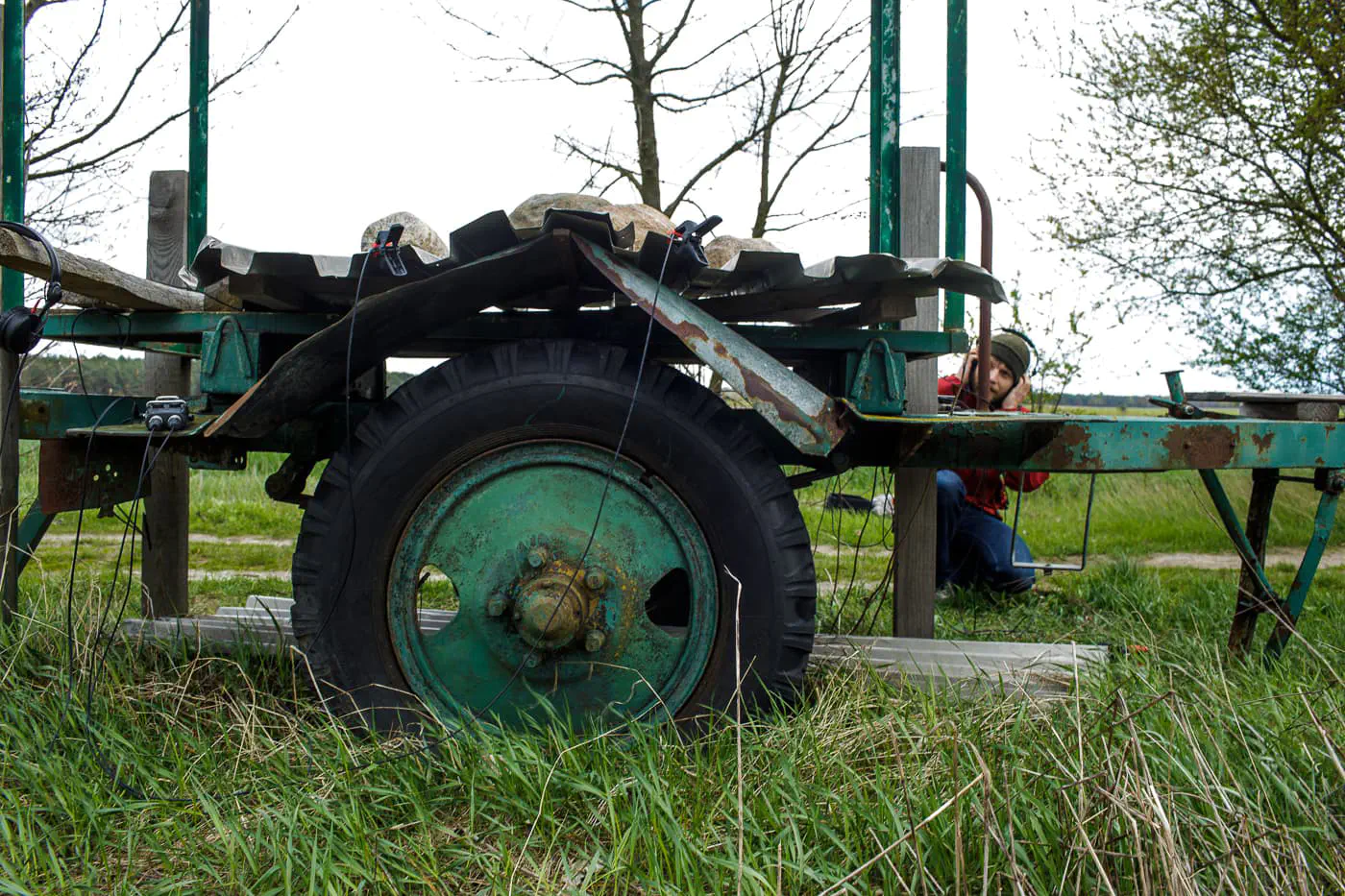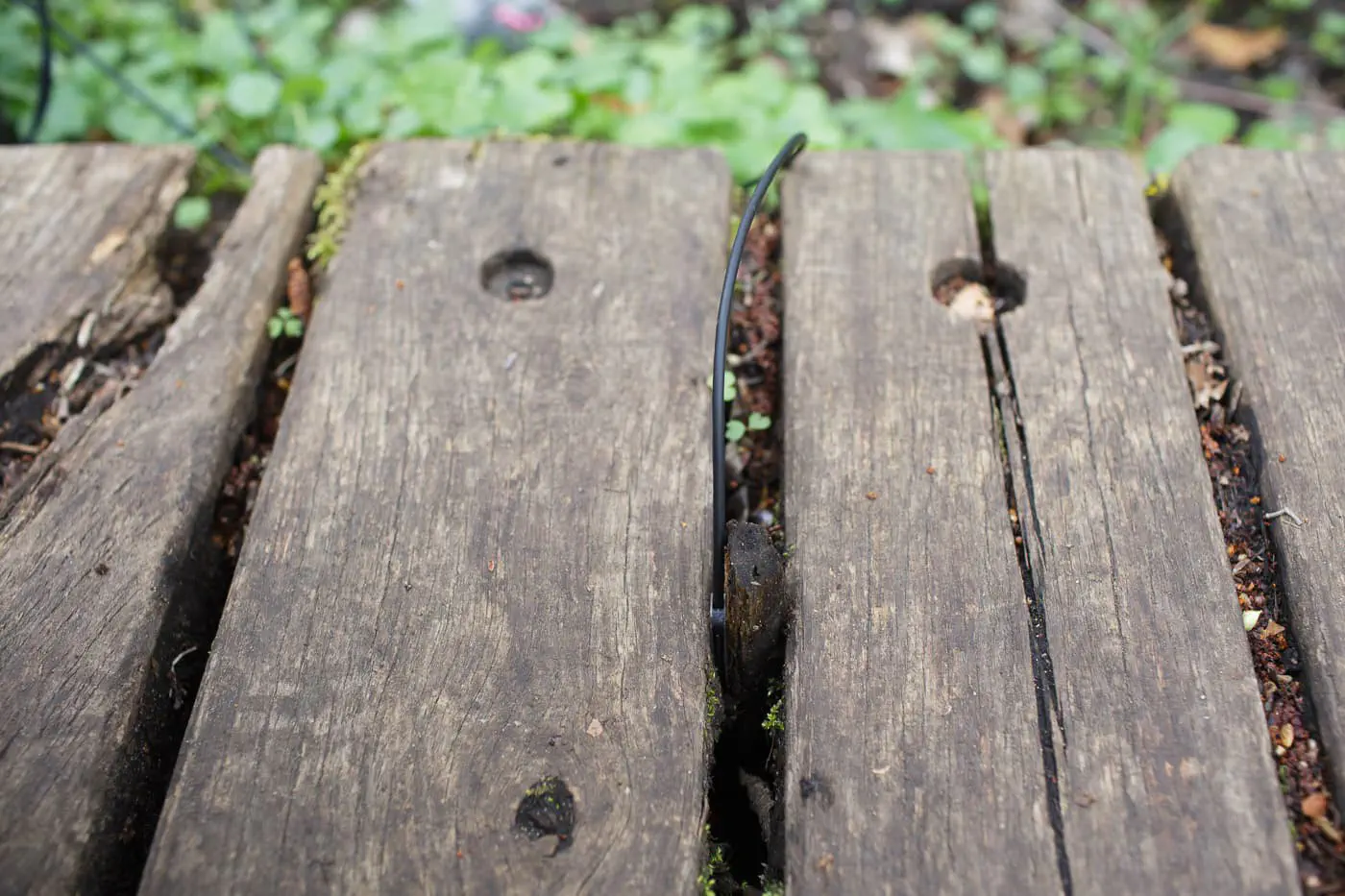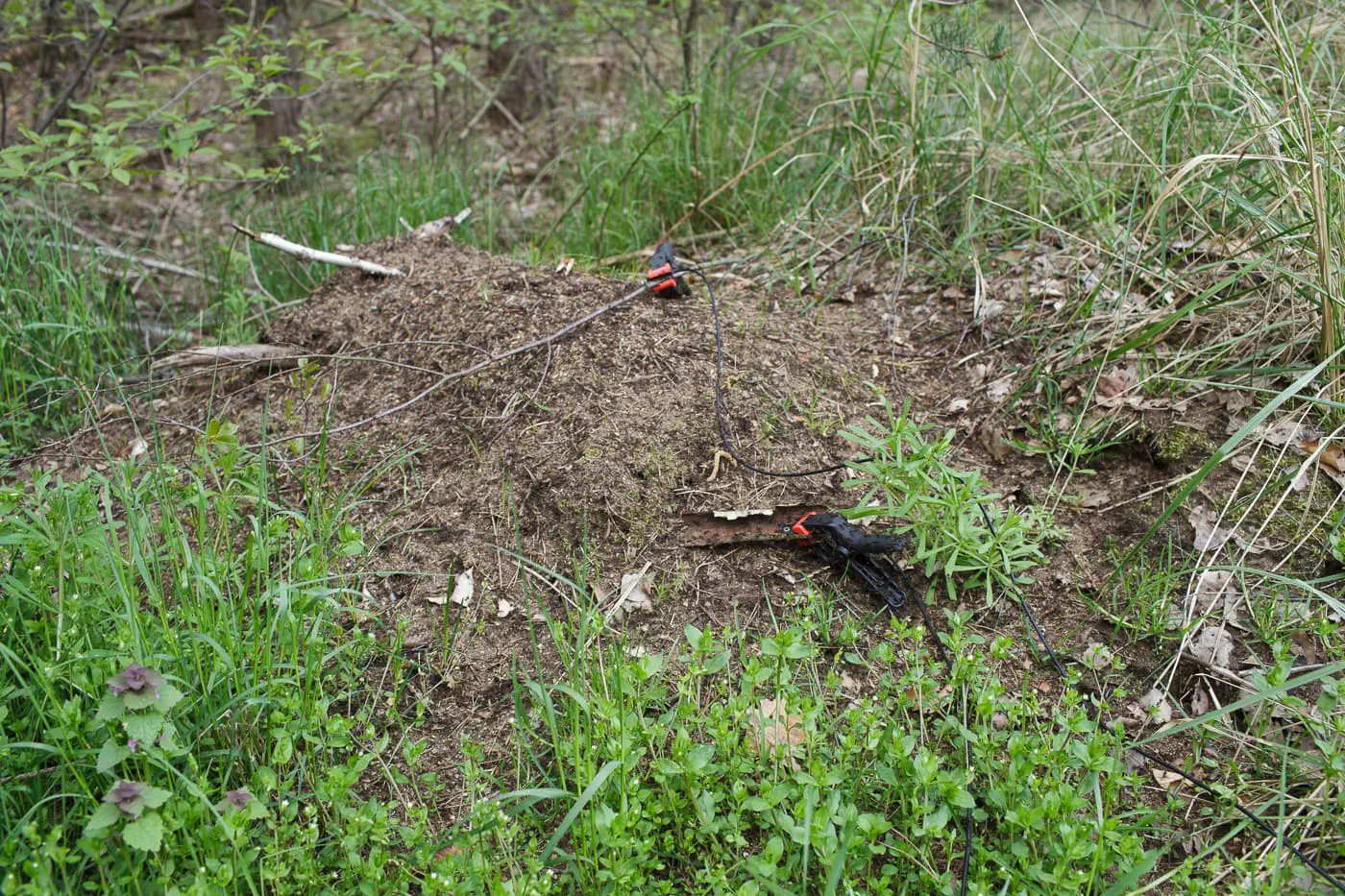Setup
Search for objects and structures that you assume to sound interesting. You can get a hint if an object will produce a sound at all by touching it with your hands: if you can feel vibrations in the structure you are touching, a contact microphone will most probably also be able to pick up its vibrations.
 Metal structures are particularly interesting to listen to. Sheet metal often allows to use a clamp to properly attach a contact microphone.
Metal structures are particularly interesting to listen to. Sheet metal often allows to use a clamp to properly attach a contact microphone.
Things
After connecting the contact microphone to your audio recorder, place it on or into the structure you want to record. Make sure to establish a good connection without dampening the object’s vibrations too much; the more pressure (within reason) is applied to the connection between contact microphone and vibration source, the better the results will be. If the structure itself does not provide a good hold, you can also use a clamp (e.g. for metal sheets or thinner branches), or a tether rope (e.g. to press the sensor against a mast).
 Also wooden walkways can be fun. Here, a gap between the boards of the walkway together with a piece of wood serves as clamping mechanism.
Also wooden walkways can be fun. Here, a gap between the boards of the walkway together with a piece of wood serves as clamping mechanism.
Once you attached the contact microphone, you can start listening to the vibrations of the object. Sometimes it makes sounds by itself (e.g. caused by the wind or other external forces). If there are no sounds (or you just feel like it…), it might be rewarding to hit the object, e.g., with a stick you found on site to create impact sounds. If this is interesting for you, you might want to bring more professional tools such as felt mallets or a (cheap) violin bow to play the objects and structures you find in the field.
.](/resources/struktophon_in-the-field/images/struktophon_in-the-field_1440px_5_hub2db6f846e36755c58ce4cef1c81baca_356422_1400x0_resize_q75_h2_box.webp) Or play what you find on the metal recycling stack.
Or play what you find on the metal recycling stack.
Critters
Of course, recording vibrations does not stop at inanimate things; Particularly insects like ants or bees can be listened to as well, and, if you are considerate and careful, they will not mind your intrusion too much. Since ants are small and their nest is made of loose material, try experimenting to attach the contact microphone to a larger surface, e.g. a piece of bark you can often find close by an ant nest. This way, the bark serves as a sort of “doormat” for the ants and you can pick up their footsteps.
 Maybe try sticking PLONK® struktophon into an ant nest?
Maybe try sticking PLONK® struktophon into an ant nest?
Do you have other ideas and techniques you came up with, or simply want to share sounds you created with your setup? Feel free to contact us and we might include them into this page.

